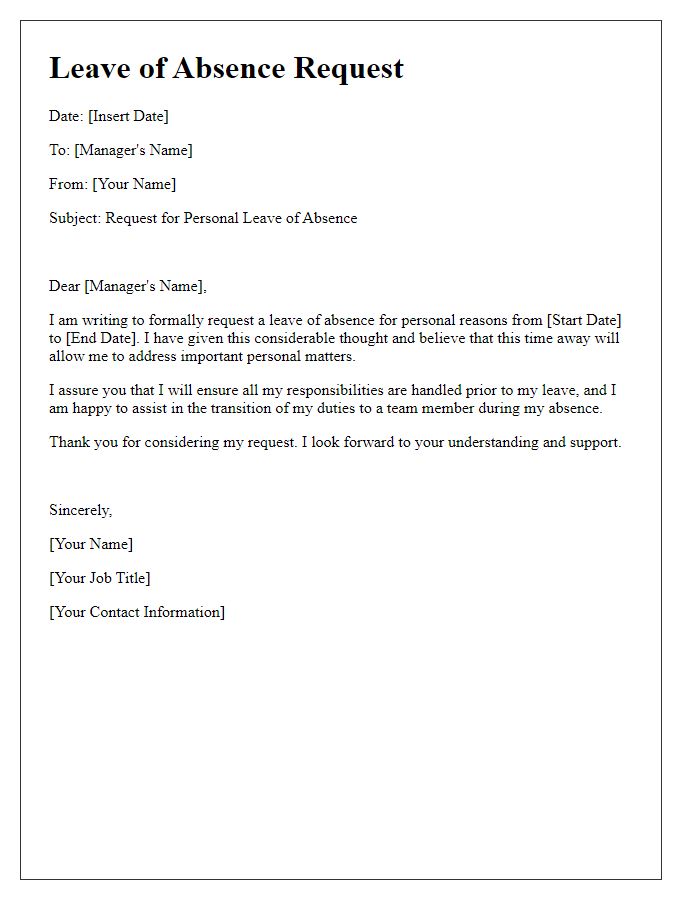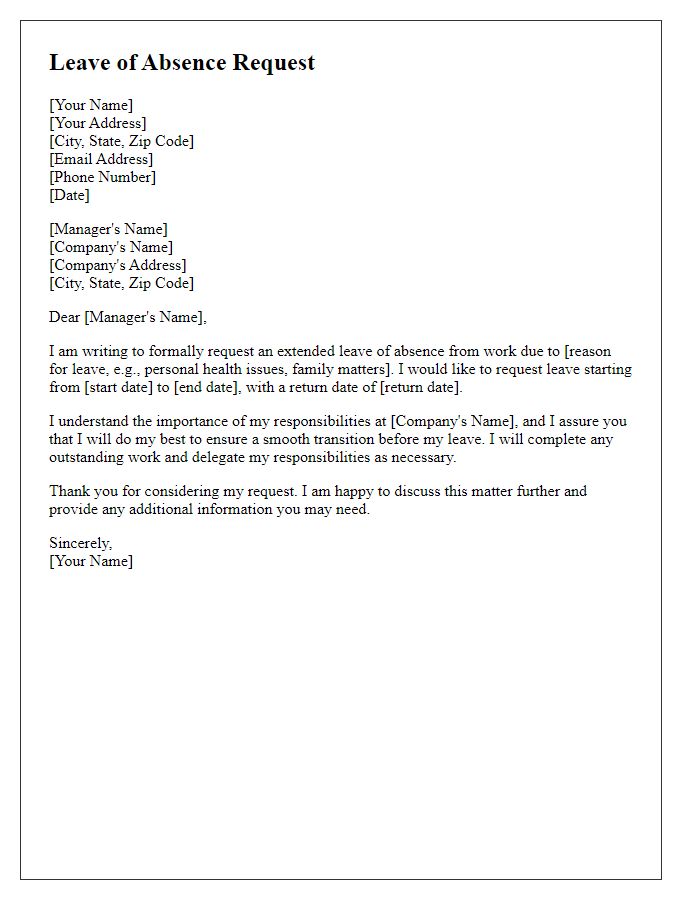Are you planning to take a break from work or school and need to request a leave of absence? Crafting the perfect letter can help you communicate your intentions effectively while maintaining professionalism. In this article, we'll guide you through the essential elements of a leave request letter, including tone, format, and important details to include. So, grab a cup of coffee and let's dive into how to write a compelling leave of absence request!

Proper Salutation
A leave of absence request should include a clear and formal structure, starting with a proper salutation. Address the recipient respectfully, using their title and last name, such as "Dear Mr. Smith" or "Dear Dr. Johnson." This sets a professional tone for the correspondence. It's essential to ensure accurate spelling of the recipient's name and title, as this demonstrates attention to detail and respect. The context and purpose of the leave should follow the salutation in a concise yet informative manner.
Clear Subject Line
A leave of absence request should include a suitable subject line indicating the purpose of the email, such as "Request for Leave of Absence - [Your Name]". In the body, state the dates of intended leave, the reason (medical, personal, vacation), and any necessary documentation to support the request (doctor's note for medical leave). Specify your intention to ensure a smooth transition for your responsibilities, possibly including a plan for delegating tasks or covering duties during your absence. Highlight your availability for any urgent matters and express gratitude for their understanding.
Precise Leave Period
An organization's leave request process often requires specific details regarding the absence duration. Employees should indicate the leave period clearly, such as a two-week absence from October 1 to October 15, 2023. Supporting reasons for the leave, such as medical emergencies, personal matters, or family commitments, can also be relevant. Clear documentation or references may be required, linking the request to the organization's policy, ensuring a seamless approval process. Proper communication addresses potential concerns regarding workload management during the leave, emphasizing the plan for coverage or handover of responsibilities.
Justification of Absence
A leave of absence may be necessary for personal matters, such as health issues or family emergencies. In a corporate environment, clear communication with human resources (HR) is vital. Many organizations have specific policies regarding leave requests, including the requirement to submit a formal request in advance, typically at least two weeks before the intended absence. Documentation may be required, such as a doctor's note for medical leave or a statement regarding family matters. Employees should also be aware of the company's leave policies, which may include paid leave provisions, unpaid leave options, and the process for obtaining approval from management. Properly justifying the absence ensures that the organization can plan accordingly and maintain productivity.
Contact Information for Emergencies
In case of emergencies, it is crucial to have accessible contact information for swift communication. Designate a reliable contact person (e.g., a family member or colleague) along with their phone number and email address to ensure efficient updates during any unforeseen circumstances. Providing alternative contacts (e.g., a secondary family member or neighbor) can enhance communication reliability. Keep in mind that emergency contacts should be informed about your leave of absence, especially if they may need to handle responsibilities or relay messages. Always ensure that the provided contacts are prepared and willing to assist in your absence.













Comments